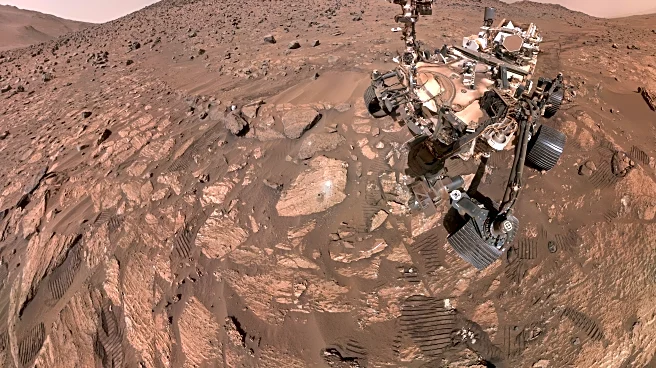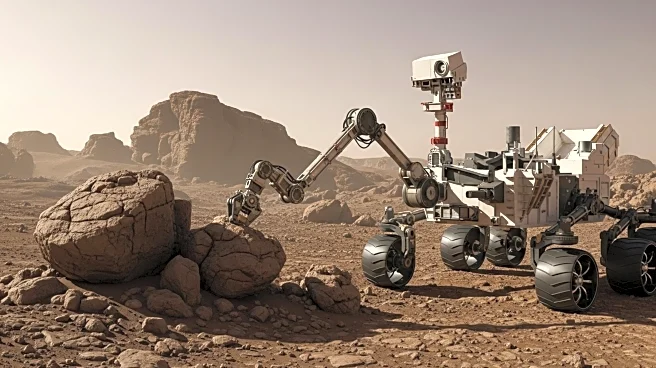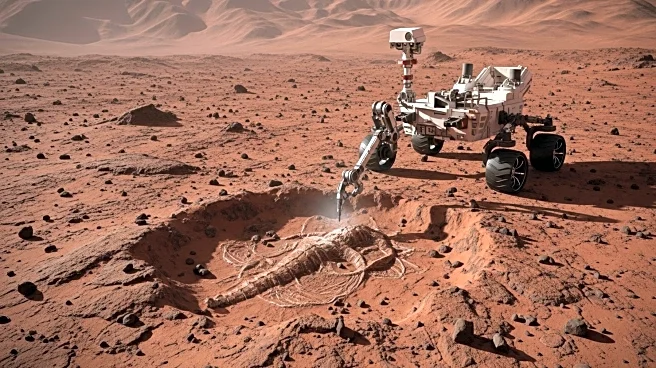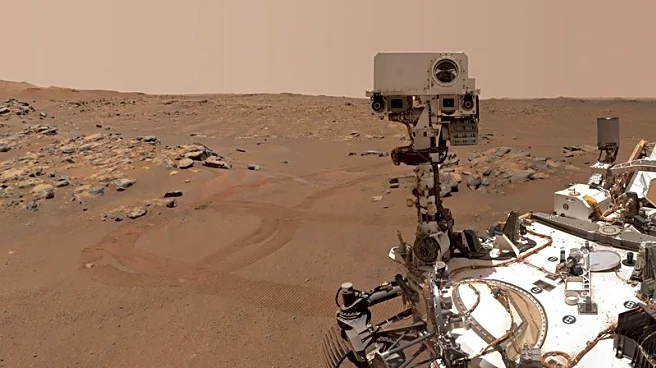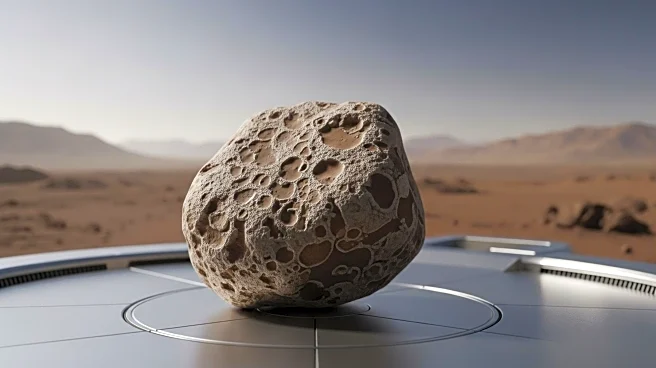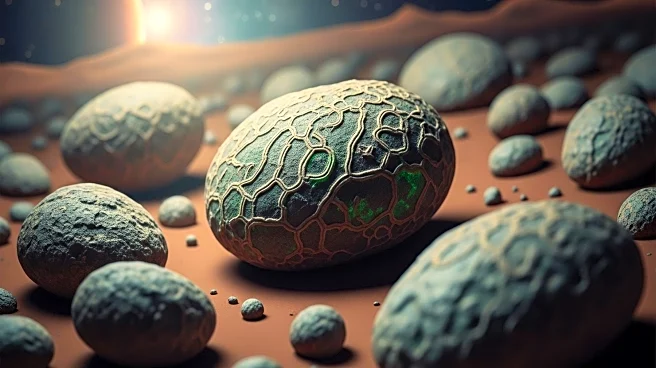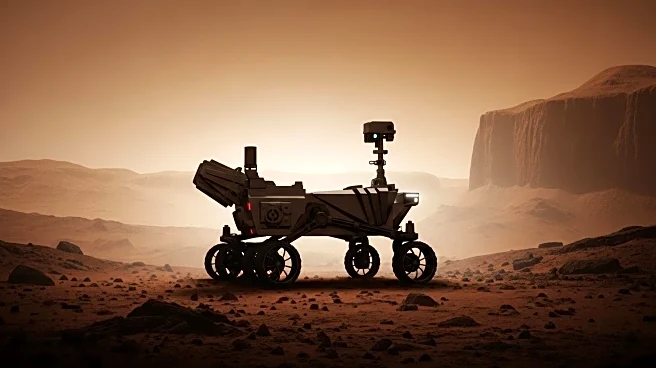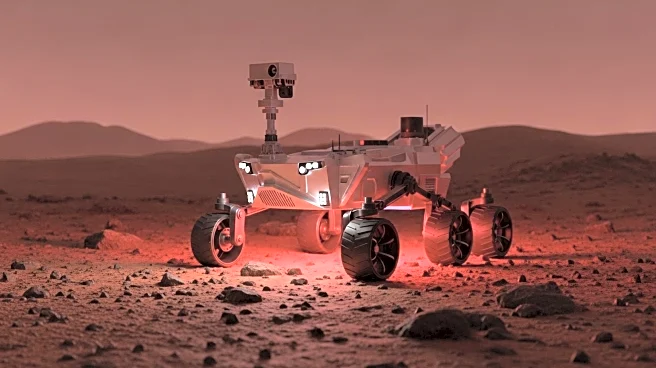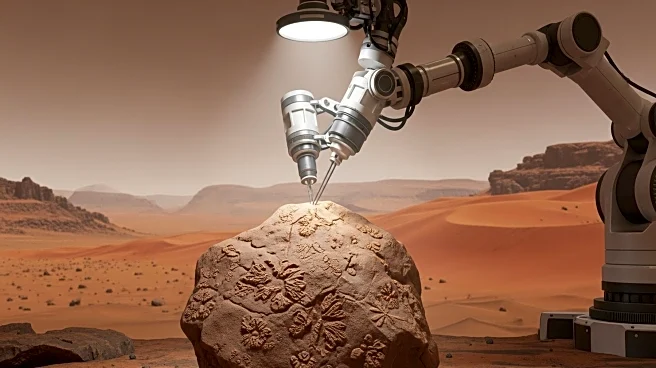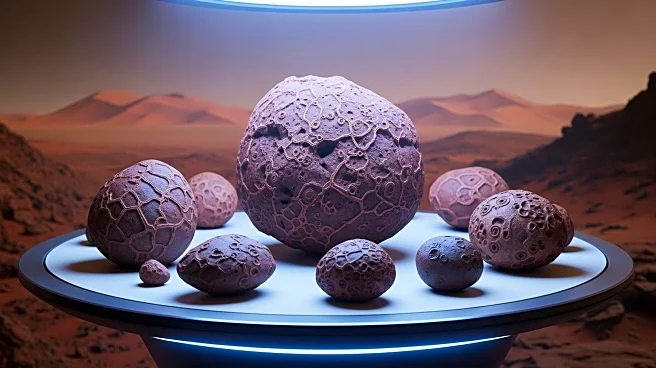What's Happening?
NASA's Perseverance Mars rover has discovered rocks in a dry river channel on Mars that may contain potential signs of ancient microscopic life. The rover, which has been exploring Mars since 2021, collected samples from the Neretva Vallis, a river channel that once carried water into Jezero Crater. These samples, particularly from reddish, clay-rich mudstones, have shown features that could be indicative of microbial life. However, scientists emphasize that further analysis is needed, ideally in labs on Earth, to confirm these findings. The rover cannot directly detect life but uses a drill to collect samples from areas deemed most likely to have hosted life billions of years ago. The samples are awaiting retrieval to Earth, a plan currently on hold as NASA seeks more cost-effective options.
Why It's Important?
The discovery by Perseverance is significant as it represents the most compelling evidence yet in the search for ancient life on Mars. If confirmed, it could revolutionize our understanding of life beyond Earth, providing insights into the conditions that may support life on other planets. The presence of organic carbon and chemical compounds like iron phosphate and iron sulfide, which are byproducts of microorganisms interacting with organic matter on Earth, suggests that similar processes might have occurred on Mars. This finding could have profound implications for astrobiology and the search for extraterrestrial life, potentially influencing future Mars exploration missions and the development of technologies for sample retrieval.
What's Next?
NASA's plan to bring the samples back to Earth has been delayed, with the expected return date slipping into the 2040s due to increased costs. Until then, scientists will rely on Earth-based experiments to evaluate the possibility of ancient Martian life. The samples collected by Perseverance are crucial for understanding Mars's geological history and assessing its habitability. Future missions may focus on retrieving these samples and conducting detailed analyses to confirm the presence of biosignatures. The scientific community will continue to explore alternative methods for sample retrieval and analysis, potentially involving robotic spacecraft or astronauts.


